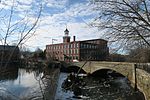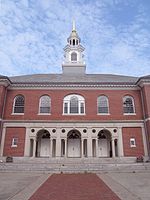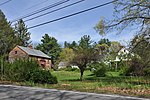Middlesex Jail and House of Correction
Jails in MassachusettsMassachusetts building and structure stubsUnited States prison stubs
Located in Billerica, Massachusetts The Middlesex Jail and House of Correction serves Middlesex County, Massachusetts. Men are housed here awaiting trial or serving sentences up to 2 ½ years. The jail also houses women classified to the Middlesex Sheriff's pre-release center
Excerpt from the Wikipedia article Middlesex Jail and House of Correction (License: CC BY-SA 3.0, Authors).Middlesex Jail and House of Correction
Treble Cove Road,
Geographical coordinates (GPS) Address Nearby Places Show on map
Geographical coordinates (GPS)
| Latitude | Longitude |
|---|---|
| N 42.5554593 ° | E -71.3037852 ° |
Address
Middlesex County House of Correction (Billerica)
Treble Cove Road 269
01821
Massachusetts, United States
Open on Google Maps









